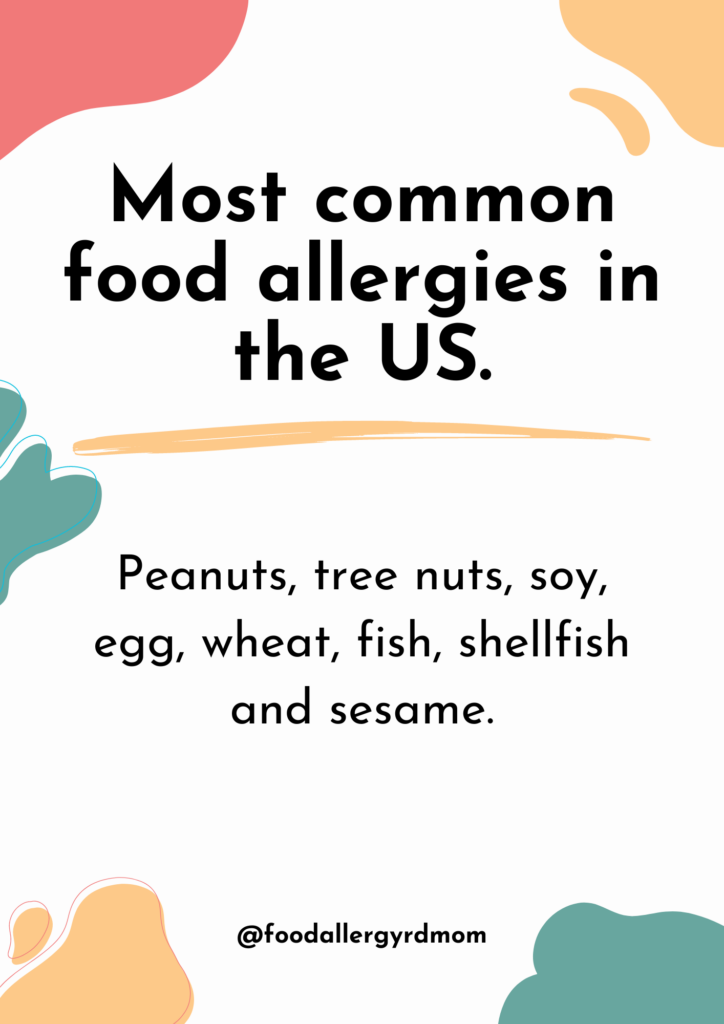If you live in the United States and are familiar with food allergies, you know that the nine most common food allergens are peanuts, tree nuts, soy, egg, dairy, wheat, fish, shellfish and sesame. Our family lives with five of the top nine most common food allergies, but are there any other food allergies that haven’t made the list? At least, yet?
Sesame just became a top food allergy in the United States in January 2023, but what’s to say other foods won’t be added? And if there are, what might they be?
Some other food allergies that have not yet made the list are:
Mustard
We have a mustard allergy in our home and mustard is a common food allergen in Canada, Spain and France. You usually find mustard in a jar, but it can also be used as a spice in foods. In the US, mustard does not have to be clearly labeled since it is not a top food allergy here. This is why it is so important to contact manufacturers, if you have food allergies that are not top nine. If you see spices listed on an ingredient label, ask the manufacturer if mustard is included. Mustard can be found in hot dogs, deli meats, salad dressings, sauces, pickles, dehydrated soups and more.
Sulphites
Sulphites are used as an additive in foods and they are another common food allergy in Canada. Sulphites are in alcohol, condiments, dried fruits, dried herbs, jellies, vinegar and others. I do have patients who are allergic to sulphites. Again, you need to contact manufacturers if you are unsure of ingredients.
Corn
Corn allergy is uncommon when compared to other food allergies like nuts, eggs and milk, but can occur after high exposure to corn or products containing high amounts of corn-derived substances, such as corn syrup, corn oil or corn starch. If you feel you have symptoms after eating corn or corn-derivatives, contact your allergist.
Celery
Most people, including myself, don’t expect celery to be a common food allergen, but about six percent of the population is allergic to celery. The most common symptoms include itching or irritation in the throat. Soups, sauces, broths, stocks, stews, salads and tomato juice can all contain celery. Read food labels carefully if you are allergic.
Peas
Pea protein is now being seen everywhere on food labels. It can be added to protein bars, protein shakes, protein powder, or in almost any processed food for a boost of protein. Once foods become consumed in higher quantities, it seems as if the risk of allergy increases as well. After talking to other food allergy dietitians, peas seem to be their guess as one of the next most common food allergies.
If you are traveling outside of the United States, it’s important to realize that every country’s top allergens are different. Even though the US has the top nine most common food allergies, the UK has the top fourteen and Canada has the top eleven. If you travel farther east, the common food allergies change even more. In that respect, always keep a list of your food allergies and translate them into the language of the country you are traveling to, so they are sure to know what you are dealing with.
If you feel you may be living with a food allergy, but don’t know what to do, please feel free to reach out to me and we can discuss your symptoms and together find an allergist, if needed, that can help you.
Looking for safe, allergy-friendly snacks for your children for back to school? Go to the freebies tab on my website and get your copy today!
